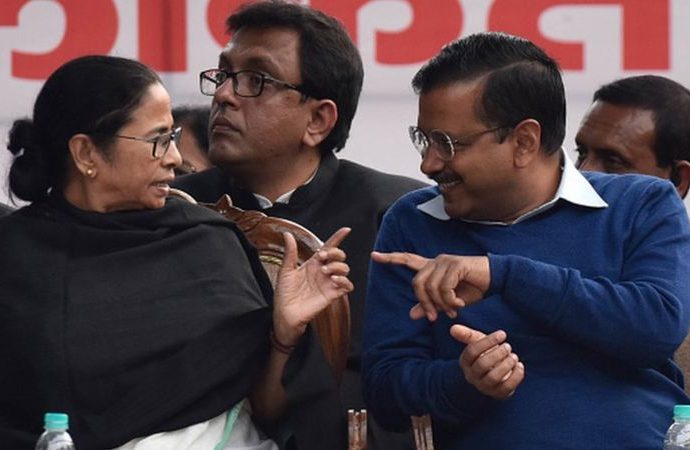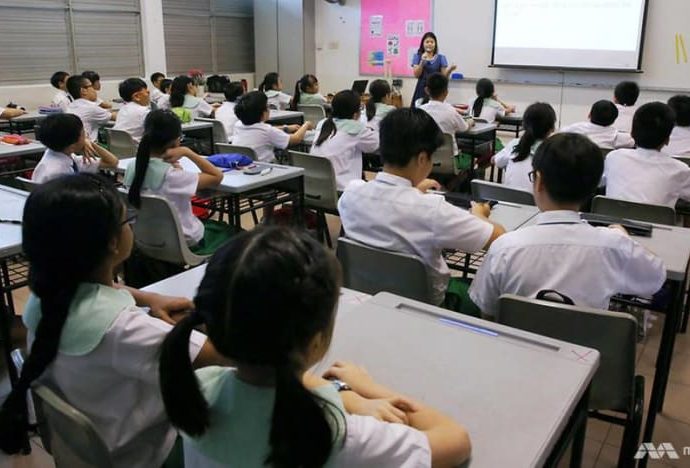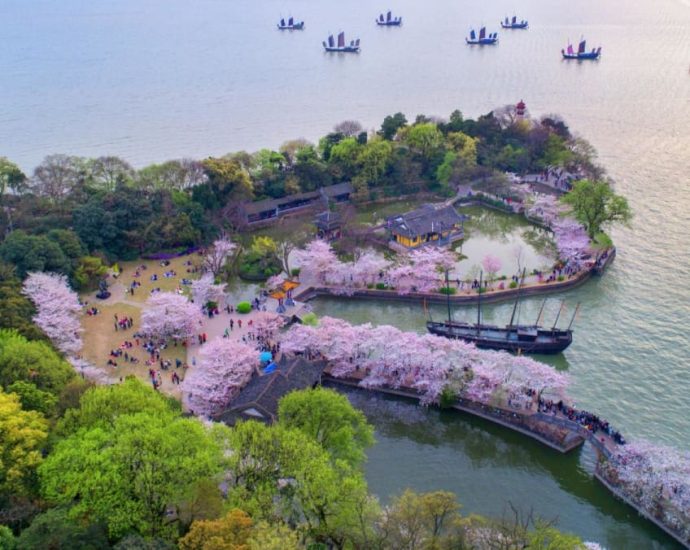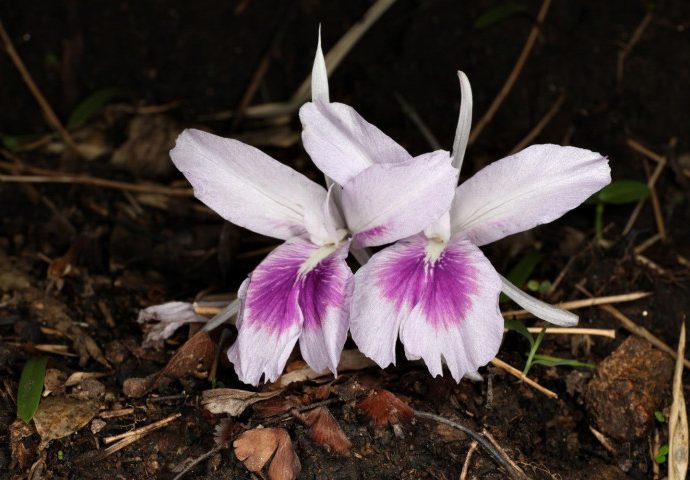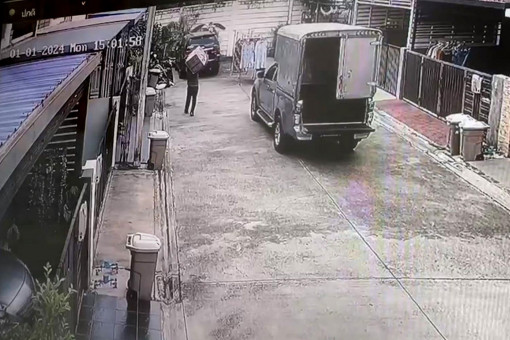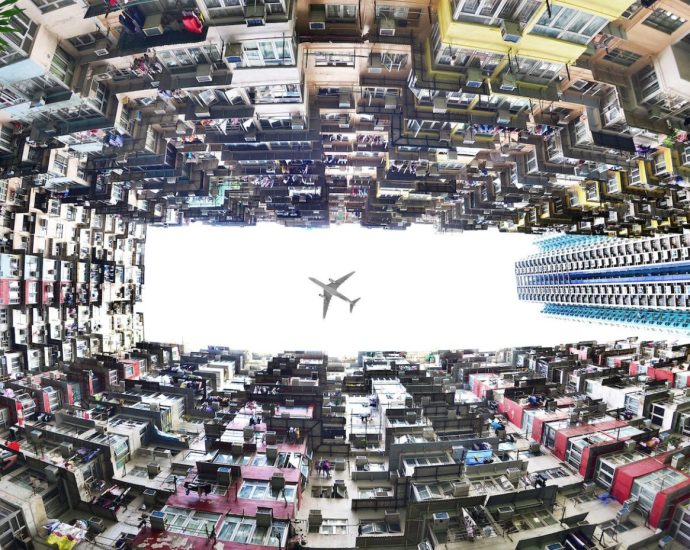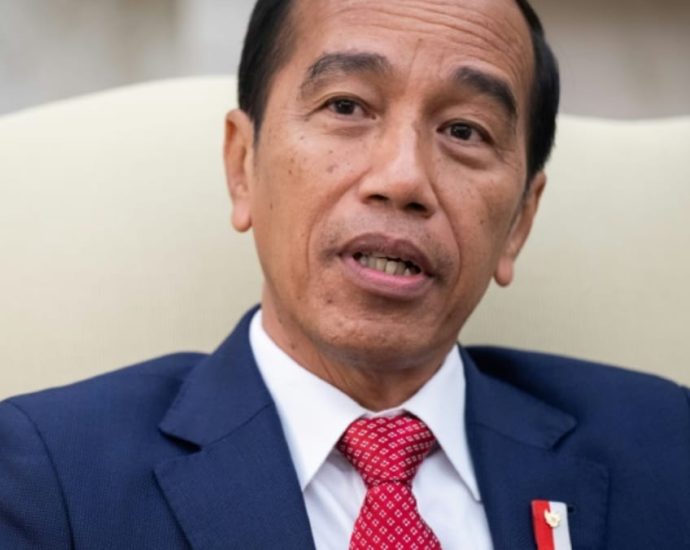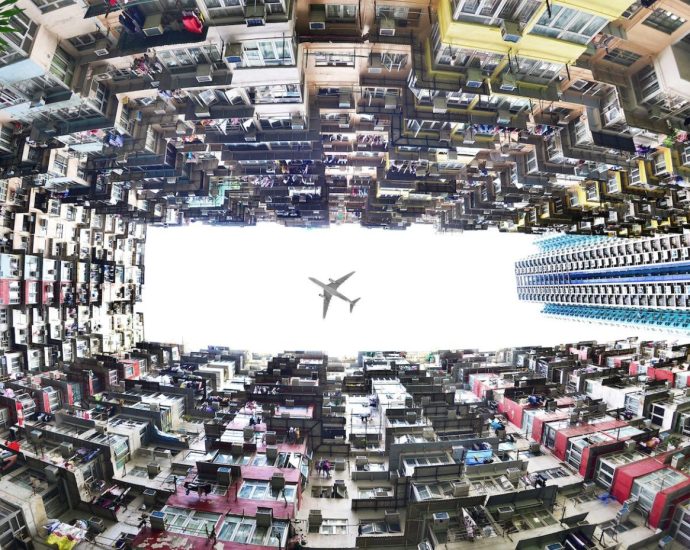Iraq and Iran were complicit in the Tower 22 attack – Asia Times
Tower 22 is a US base in Jordan, just across the border from a US base at Al Tanf, Syria. It was attacked early in the morning on January 28th – killing three American soldiers and injuring 47 more. Eight soldiers were evacuated, some with physical wounds and others with concussions, described as traumatic brain injuries.
The Biden Administration is misleading the American public about the Tower 22 attack to obscure Iran’s direct involvement and hide the fact that Iraq is complicit in the killing and wounding of our soldiers.
Admiral John Kirby, the coordinator for strategic communications at the National Security Council, said explicitly that the United States is not looking for a war with Iran. He failed to mention that Iran has proclaimed itself at war with the United States and has been using its proxies to attack US bases and killing and wounding American soldiers for years. Iran now controls Iraq, Syria, and Lebanon.
The US Central Command (CENTCOM) said the base was hit by a one-way drone, but no photographs have been released and there is, in fact, no confirmation of what the drone actually hit. From various reports it could have been living quarters, a common meeting area or a cafeteria.
Typically in a drone or rocket attack parts of the weapon survive in the wreckage. Often this includes parts of the drone or rocket body, the engine, sometimes electronic components, actuators, cameras or radios. It is important to retrieve the surviving components because they usually are evidence of the model and origin of the drone or rocket.
Strictly speaking, since CENTCOM says this was a one-way drone, we are talking about a loitering munition. It is likely that the absence of more detailed information is deliberate and would expose Iran’s direct involvement.
On the ground
Tower 22 and al Tanf are in the area where Jordan, Iraq, and Syria meet. The situation is politically complicated because Jordan is an American ally, and the United States has made a massive policy blunder believing it could (and still can) hang onto its bases in Iraq and Syria even though their missions have been badly compromised. This leaves our troops vulnerable to attack and destruction.
Making the US position even more untenable, the Biden administration has been appeasing Iran, which is the main enemy of all US allies in the region – Israel, Jordan, Egypt, Saudi Arabia, and the Gulf States.
Tower 22 is a US logistics base that supports al Tanf. The attack there was unexpected, although al Tanf has been attacked several times, wounding American troops and killing a US contractor.
Apparently, the Army decided not to do anything to protect Tower 22 because it is in Jordan, which is technically an American ally and not seen as a target of Iran’s effort to control the Middle East “Shiite Crescent,” That conclusion reflects the poor level of analysis in Washington.
What we actually know is very limited. CENTCOM says the attack was carried out by a drone operated by an Iranian proxy – likely the previously sanctioned Kata’ib Hezbollah (KH), the Party of God Brigades, which is aligned with the elite Quds Force of the Iranian Revolutionary Guard Corps.
KH is a Shia militia that gets money and policy support from Iraq’s government. It has taken part in combat operations against ISIS in Iraq and anti-government forces in Syria. It staffs the 45th, 46th, and 47th Brigades in the Iraqi Popular Mobilization Forces, which were formed in 2014 to fight ISIS and became an official part of Iraq’s security apparatus in 2016.
Tower 22 buildings
Tower 22 is a logistic supply hub with approximately 350 personnel. It supports its larger neighbor, al Tanf, which has approximately 1,200 Americans and houses a Syrian-origin fighting force called the Revolutionary Commando Army, which is trained and directed by the US. Both use containerized housing units and other prefab structures for dining halls and meeting rooms.
Containerized housing units, abbreviated CHU, are paper-thin structures that often are bunched together. Sometimes they have some sandbags around the base, and in some instances (but not here) they may also have sandbags on the roof. Usually, an officer above the rank of major gets one of these tiny sheds to himself or herself; otherwise, there are two soldiers in each one.
A CHU has barely enough room for a bed (or two), a small desk and a locker or closet. Each unit typically has an installed combination air conditioner/heat pump. They generally have steel frames and walls of plywood, tin, rock wall sandwich or other low cost material.
If a shrapnel-filled bomb exploded near a CHU it could do a great deal of damage, since literally nothing stands in the way to stop the fragments. Even individual bullets can fly right through these structures.
The Army could, of course, provide more secure housing, especially at vulnerable base areas. Congress should investigate why the Army chose to expose US troops to such an obvious risk.
In the past, when al Tanf was attacked, CENTCOM celebrated that it was able to defend these bases.
The trdth is otherwise. There are “Before and After” satellite photos of one strike at al Tanf that show significant destruction.
Why didn’t air defenses work?
We do not know what kind of air defense systems, if any, may have been at Tower 22.
The best guess would be the Avenger Air Defense System and Stinger MANPADS, both used by the Army. (Avenger was previously operated by the US Marines, but it became obsolete and taken out of service.) First fielded in 1989, Avenger is a 35-year-old air system that has never shot down a drone in combat anywhere.
The system is mounted on a HMMWV Jeep-like vehicle and fires Stinger air defense missiles. It can be linked to an external radar source, but typically it is mobile and stand-alone. It does not have its own radar, so the operator has to physically see the threat.
Avenger is present in Syria and Iraq.
Stinger is a MANPADS, that is a man-carried and operated air defense weapon that has to see the threat, just like Avenger. Stinger can have a dual seeker-sensor in the missile’s nose that is sensitive to both infrared and ultraviolet light.
Drone makers using gasoline engines usually port the engine exhaust above the wings and fuselage of the drone to make detection of any heat source difficult. The Stinger missile, in either application, has to “lock onto” the heat source of the drone or other enemy target.
Both Avenger and Stinger are “fire and forget systems” and, as in the case of Avenger, there are no reports of Stingers shooting down drones in combat. A few drones have been shot down on test ranges to demonstrate they can work.
A Pentagon “preliminary report” says that Tower 22 had its own drone in play and that the enemy drone either took advantage of the US drone’s flight path or was shielded by the US drone, so the air defense operators at Tower 22 did not fire on it.
There is, however, a problem with the story.
Both Stinger and Avenger are equipped with a system to differentiate between threats and friendlies called IFF (Identification Friend or Foe). In fact, modern IFF transponders, known as Mode 5 class, can identify a friendly if the friendly is “beeping” the right encrypted code; but if it is not sending the correct code then the ground operator must assume it is a threat and take action to destroy it.
In modern combat scenarios, IFF is critical, and most US military drones have miniature IFF transponders on board.
The bottom line is that if there was a US air defense system at Tower 22 it would have had IFF, and the base operators would not have been confused.
Is it possible that the drone the US launched, the drone that caused confusion, did not have an IFF transponder? Perhaps.
The Task Force 99 alternative
In October 2022 CENTCOM created a new organization called Task Force 99 to plan for the use of cheap commercial drones, either bought on the market or 3D printed, for intelligence, surveillance, and reconnaissance missions (ISR). The organization is based at the Al Udeid Air Base in Qatar and is made up of about 15 people.
When Task Force 99 was interviewed last year, it had approximately 98 drones (broken down into 13 types) with ranges between 12.5 and 900 miles. It also produced its own 3D printed drone called Kestrel.
By and large all these are small plastic drones, usually in quadcopter format. Some of these drones are battery powered and include group 1 and group 2 unmanned aerial systems (UAS) platforms. Group 1 small UAS are back-packable and used for “over-the-hill” missions. They typically operate at altitudes under 1,200 feet. Group 2 are somewhat larger and operate below 3,500 feet.
Task Force 99 is tasked with finding unique drone solutions to support US operations in the Middle East. But because Task Force 99 is looking for cheap commercial products, the drones it works with are not equipped with IFF.
We don’t know whether Tower 99 was using a Task Force 99-supplied drone but given its location and the need to search the perimeter around the base, this would have been a cheap way to do the job.
There is, unfortunately, in the reporting of Task Force 99, no discussion of how commercial drone systems can be compatible with air defense systems. Nor is there any reported protocol for working with air defenses in order to avoid fratricide situations or fatal mistakes. More information is needed, but the possible presence of a Task Force 99 drone may indicate that air defenses were being shut down during US Army drone operations.
The loitering munition
As former CIA analyst Larry Johnson has expounded, it would take a large munition to cause the damage at Tower 22. We know that multiple drones hit al Tanf causing significant damage. It is also reasonable to think that the strike on Tower 22 was well-planned and intended to cause maximum casualties. This means either the base had been previously surveyed by hostile drones, or the enemy got satellite pictures, or the enemy had spies at the base – or possibly all of the above.
The most likely loitering munition fired at Tower 22 would have been a version of the Iranian Ababil 3. It is manufactured by the Iran Aircraft Manufacturing Industrial Company (HESA). It is a single engine drone with an engine reported as coming from German company Limbach Flugmotoren.
Some loitering munition versions of this drone are called Qasef-1 and Qasef-2. In Iraq, the drone is called the Basir-1 and is used by the Popular Mobilization Forces (PMF) in Iraq. At least four different terrorist organizations operating under the umbrella of the PMF – the Badr Brigades, Kata’ib Hezbollah, Kata’ib Jund al Imam and Harakat Hezbollah al Nujaba – have used these drones in past attacks.
There are two other Iranian drones that could have been used. Mohajer-6 was used exclusively by the IRGC in the past. It is a large drone that carries four precision-guided munitions. It is not a loitering munition (or kamikaze drone), and after delivering its bombs it returns to base, operating somewhat like the Bayraktar Turkish drone that was prominent in the Nagorno-Karabakh war, in Ukraine, Libya and elsewhere.
The other candidate is the Shahed 136, today used widely by the Russians in Ukraine (now under the name Geran-2). It is a loitering munition with a warhead of between 40 and 50 kg.
The attack on Tower 22 occurred “in the early morning,” meaning the weapon itself was probably launched, some distance away, at night. All these drones are slow flying. It also means that if the soldiers were gathered in one place they would have been at breakfast. If the drone arrived from the East with the rising sun, observing it would have been difficult.
The perpetrators
The Biden administration has been adamant that the actual attack was carried out by Iranian proxies, without naming the group or individuals responsible, although certainly it knows. Moreover, and even more importantly, the administration has avoiding pointing a finger at Iran for directing its proxy or proxies.
According to Entifadh Qanbar, President & Founder of the Kurdish Protection Action Committee (KPAC), the actual attack was done by Kata’ib Hezbollah (KH), an Iranian-sponsored, anti-American Shiite militia operating in Iraq with collateral operations throughout Syria. It is tied directly to the IRGC-Quds Force. [Jamal Jaafar Ibrahimi, known widely by his nom de guerre Abu Mahdi al-Mohandes, was its leader until his death on January 3, 2020, in a US drone strike at Iraq’s Baghdad International Airport that also killed Qasem Soleimani, the head of Iran’s Quds Force.]
Abu Fadak Al-Mohammedawi is the general secretary of KH and is the overall head of PMF forces in Iraq. KH maintains strong ties with Iran and pledges spiritual allegiance to Supreme Leader Ali Khamenei. The PMF is directly funded by the Government of Iraq which pays for its operations and provides a separate budget for PMF weapons’ acquisitions. According to available Iraqi government budget documents, Kata’ib Hezbollah receives more than $3 billion annually via the PMF from Iraq, in addition to the arms it receives from Iran.
Abu Fadak, real name Abdul Aziz Al-Mujirish Al-Mohammadawi and nicknamed Al-Khal (The Maternal Uncle), was born in January 1968. He is the chief of staff of the PMF and led the Iraqi militia attack on the US Embassy in Baghdad on December 31, 2019. According to former U.S. Army infantry officer Thomas Kurtzweil, after that attack, the name “Al-Khal” was graffitied over the walls of the Embassy.
Conclusion
The administration is working hard to keep its relationship with Iraq and protect Iran, holding back information that would directly implicate either. This compromises American forces in Iraq, Syria, and Jordan in two ways.
First, US bases are poorly defended and not strongly fortified, meaning they are relatively easy to attack with drones, mortars, rockets, and missiles. As they have been repeatedly.
Second, the US is allowing Iraq to fund and support hostile operations aimed at US installations and bases in the region. This means that US security information flowing to the government of Iraq (and its military) may be handed off to the Popular Mobilization Forces, as they are a military arm of the Iraqi government – but associated with Iran.
A US policy in which the enemy is part of the government we are supporting cannot work.
In addition to the compromised position of US forces in the region, the US response to attacks has been less than optimal. American passivity encourages even more attacks, exposing American weakness and indecisiveness and humiliating US forces who are hogtied and can’t reply.
With respect to Iran, the Biden administration’s failure to act on hundreds of Iranian-planned and ordered provocations means the situation will continue to deteriorate, and more American lives will be lost.
The policy is unacceptable.
Stephen Bryen served as staff director of the Near East Subcommittee of the Senate Foreign Relations Committee and as a deputy undersecretary of defense for policy.
Shoshana Bryen is senior director of The Jewish Policy Center and editor of inFOCUS Quarterly.
This article was first published by War and Policy and is republished with permission.
India’s opposition challenge to Modi may be imploding
 shabby graphics
shabby graphics
In the upcoming general election, Narendra Modi’s Bharatiya Janata Party ( BJP), which is currently in power, will be challenged by a coalition of more than twenty Indian opposition parties.
The group’s success depended on the allies ‘ ability to stick together and accept a tactical seat-sharing design, ensuring he could put together an offensive against the BJP with just one primary candidate in each constituency.
In India’s” second past the post” multilateral system, where the winner takes it all, a dispersed opposition always favors the former in power. In the 2019 general election, the Modi group received 37 % of the popular vote but lost 303 votes out of 530 available seats.
However, India’s jumbled opposition alliance is in disarray just six months after it was founded. Regional head Nitish Kumar’s decision to re-join the BJP after leaving a state-level ruling coalition in the northeastern state of Bihar was the most recent catalyst. Mr. Kumar had recently left an alliance led by the BJP 18 months prior. The BJP will now rely on Mr. Kumar’s Janata Dal ( United ) party to win the 40 seats in the state.
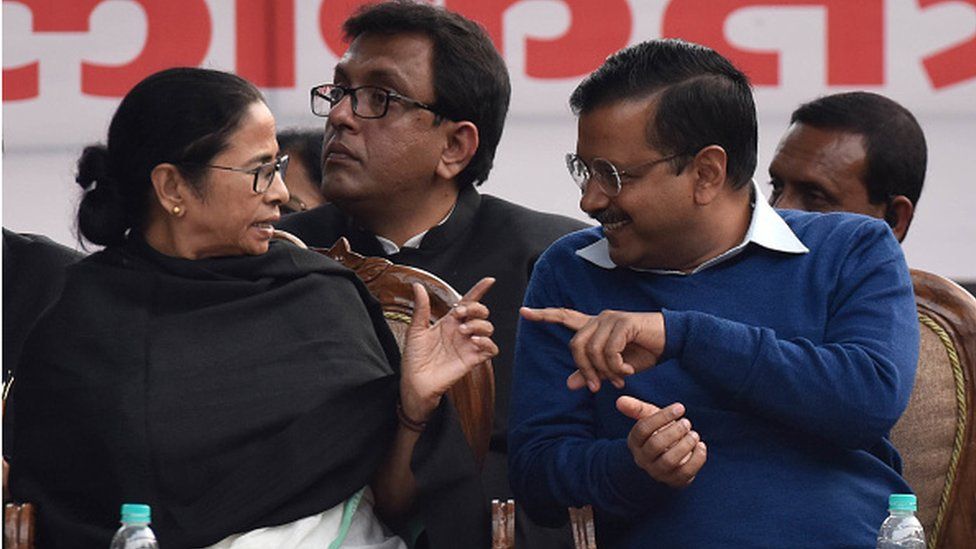
Turncoats are common in India’s tumultuous politicians, so many people were shocked by the departure of the chubby 72-year-old Mr. Kumar, who had once been rumored to be a possible future prime minister of an opposition coalition. His withdrawal is a serious setback for the INDIA empire. According to Gilles Verniers, an expert on Hindu politics, it also serves as a warning that the alliance is ineffective.
That’s not all, though. Mamata Banerjee of West Bengal’s Trinamool Congress ( TMC) and Arvind Kejriwal of the Delhi and Punjab-based Aam Aadmi Party ( AAP ) have distanced themselves from the Congress and declared their intention to go it alone in their respective states. In other words, in these claims, little to no seat-sharing is anticipated.
The upheaval in this young empire occurs as Mr. Modi appears irresistible.
” After December, things have changed considerably for the BJP. According to Rahul Verma of Centre for Policy Research, a Delhi-based think tank, the odds in favor of the group’s political leads in the elections have increased.
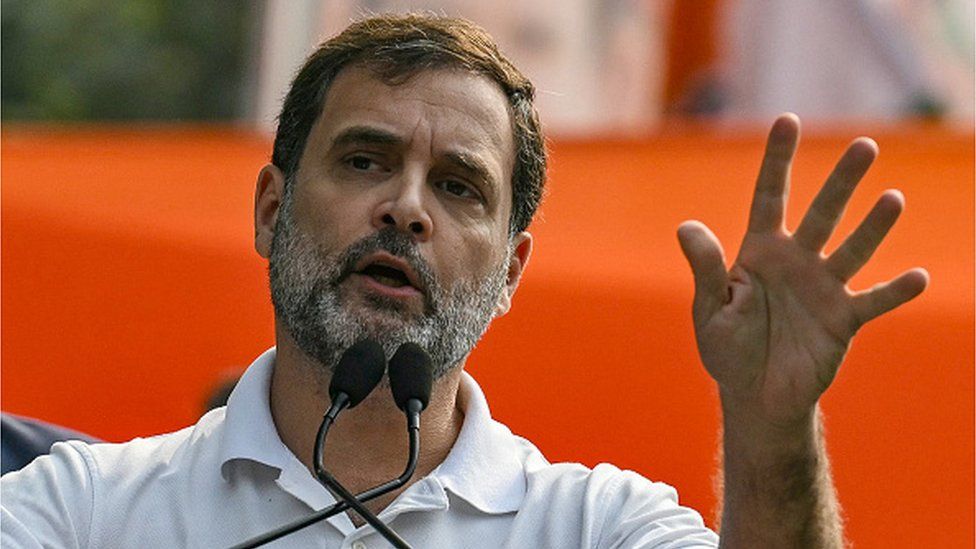
The frailty of the criticism alliance is partly due to divergent views on the Congress party, which is the only pan-Indian solution to the BJP and is led by Rahul Gandhi. In 2019, the group only won 52 seats and less than 20 % of the ballot, and it is still having trouble.
According to Mr. Verniers, this results in ridiculous seat demands that local partners are unable to meet. Because of its own frailty and capacity to derail the solution, it is believed that the Congress is a dangerous ally partner.
Some people think it would be unfair to hold the Congress solely responsible for the problems facing the opposition. Pragmatism rules in India’s fiercely aggressive political environment as each party prioritizes its own interests.
Every other empire representative in India is prioritizing their own interests over the interests of the group as a whole. Their unique position is what matters to them. Can they revert to the position they control if they lose the general vote, asks Mr. Verniers.
However, sharing seats is only one aspect of the conflict. Scientists claim that the criticism is unable to offer a powerful counterargument to the BJP’s well-liked fusion of Hindu nationalism and growth. Additionally, a sizable portion of the media, company, and community support this story, according to political scientist Asim Ali. He claims that problems simply come to the fore when they have common social assistance.
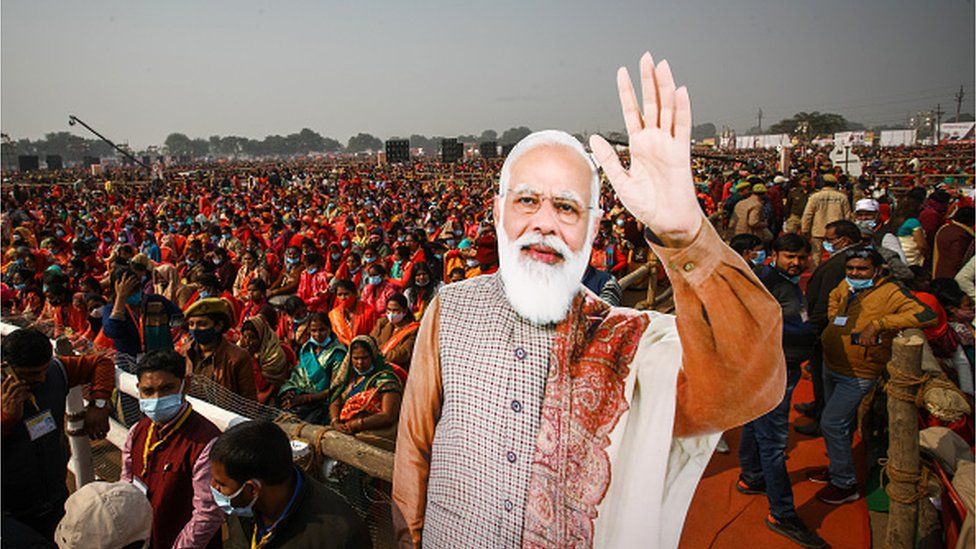
However, as Mr. Verniers points out, there does n’t seem to be any “ideological binding force” bringing the opposition together, especially in light of the strong Hindu nationalism backed by Mrs. Modi and the BJP.
To be honest, it is easier said than done to put together an ally to take on a well-oiled and well–resourced BJP led by an enormously popular president. The divided criticism took decades to unite and overthrow the ruling Congress, which ruled India continuously for 30 years from democracy to 1977.
When civil rights were suspended, the Janata Party partnership, which included socialists and Hindu nationalists, fought against Indira Gandhi’s Emergency law. ( The coalition disintegrated within two years as a result of internal conflicts and the leaders ‘ own ambitions. ) However, it was able to defeat a foe who was thought to be unbeatable.
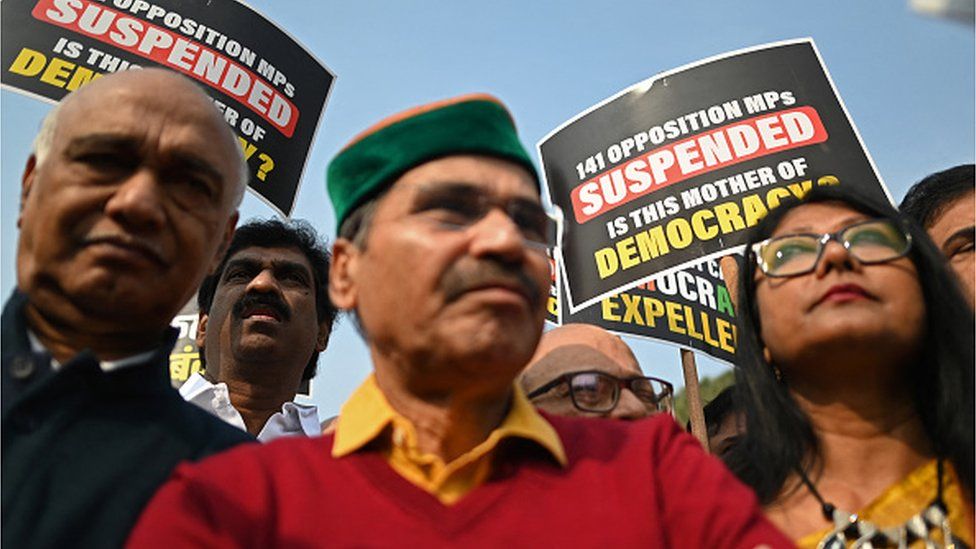
According to Mr. Verma, only a severe existential crisis or exogenous shock can foster the formation of [disparate ] allies who will face obstructive opposition from the dominant ruling party. ” In everyday situations, it is challenging.”
The INDIA ally is therefore doomed. According to Mr. Verma, the empire is in choppy waters, but they can also find a way to compete. He contends that rather than the results of local friends in their respective states, the elections depended on the Congress ‘ effectiveness in more than 250 votes in the BJP enclave of northern and western India.
Mr. Verniers provides a remedy. The Congress, which also sees itself as a significant regional player, is not ready to be accommodated by local parties. Therefore, the Congress should focus on state where the BJP and it are directly engaged in depressive conflict. Additionally, it ought to submit to the local partners in the other state. Again, this is easier said than done in American elections, as it is with a lot of other things.

Learn more News stories about India here:

Related Subjects
Heart of the Matter Podcast: Singapore students rank top in math and science, but how useful is this in a changing world?

Out of 81 countries, 15-year-olds in Singapore topped the Pisa table in reading, math and science. But how important are these metrics in a world where social and creative skills have become critical and artificial intelligence is taking centre stage?
Steven Chia gets answers from Liew Wei Li, director-general of education at the Ministry of Education, associate professor Jason Tan from the National Institute of Education, and parent of two and lecturer, Ian Tan.
Travel guide to Wuxi, China: Cherry blossoms, ancient waterways, an epic Three Kingdoms TV drama set

Part of the draw is the city’s close affinity with water, where you can do an early morning stroll around the vast Lake Taihu or take a cruise down the Grand Canal.
But Wuxi’s star attraction is its flower blossoms. Every year, hordes of tourists descend upon the city to catch a glimpse of its famed cherry blossoms, along with verdant lotus blooms, plum blossoms, peach blossoms, lush bamboo groves and even gorgeous lavender fields.
Wuxi shares a surprising number of similarities with Singapore. Locals and residents tell me that Wuxi is a clean, affluent, relatively smaller city that is centrally located which makes it easy to travel around Jiangsu.
Wuxi may not be one of Singaporeans’ top choices now, but you can be sure that it’s only a matter of time before more people catch wind of it.
1. CHASE THE CHERRY BLOSSOMS AT TURTLE HEAD ISLAND
When it comes to catching cherry blossoms, the first place that immediately comes to mind would be Japan, Korea and Taiwan. But Wuxi still remains a secret, to Singaporeans at least. The best place to view the cherry blossoms is at Yuantouzhu (Turtle Head Island), a peninsular situated at the northwest side of Taihu Lake, the third-largest freshwater lake in China. It gets the name for its huge rocks protruding into the lake, appearing as if a swimming turtle tossing its head.
5 new insect species, 1 plant variety discovered
PUBLISHED : 2 Feb 2024 at 06:23

The Foundation of the National Science Museum (NSM) has identified five new insect species and a new type of plant in Thailand, affirming the country’s development in terms of scientific exploration.
NSM president Asst Prof Rawin Raviwongse on Wednesday revealed the discovery of three species of earwigs, two species of ants and one ginger-like plant
The three earwig species are called Mongolabis chiangmaiensis Nishikawa & Jaitrong, 2023, found in Chiang Mai; Mongolabis chantha Nishikawa & Jaitrong, 2023, found in Chanthaburi; and Mongolabis siamensis Nishikawa & Jaitrong, 2023, discovered in Nan.
They are wingless and unable to fly, unlike other earwigs. Their colours range from medium to dark brown. The males have long sex organs.
Meanwhile, the two species of ants found in Thailand and Laos are known as Plagiolepis chomphuphuangi Phosrithong et Jaitrong, 2024, and Plagiolepis silpaarchai Phosrithong et Jaitrong, 2024.

One of two new species of ants. (Photo: National Science Museum)
They look almost identical to each other with the same shaped head and long hair all over their bodies, but the latter has a rougher coating. The discovery has been published in the 492nd edition of the Far Eastern Entomologist journal.
As for the new plant species, its scientific name is Kaempferia subglobosa Noppornch & Jenjitt. It belongs to the ginger family and is native only to Tak province. The discovery was published in the 69th edition of the plant journal Blumea.
“Given the number of discoveries we’ve made, the NSM has, on average, discovered a new species on Earth each year,” said Asst Prof Rawin.
“Such an achievement has led to several collaborative works with local and international research agencies. As these works are published and approved by international academics, it helps make Thailand more reputable on the world stage,” he said.

The newly discovered earwigs in Chiang Mai, Chanthaburi and Nan.
When good deeds are exploited

On Jan 2, police in Nonthaburi seized 7.5 kilogrammes of cocaine following a complaint by a homeowner in Muang district about a suspicious package sent to his house.
Inside a cardboard box, on which his daughter’s name was written as the recipient, police found 15 seat cushions; each one hid a 500g packet of cocaine.
According to the homeowner, his daughter, a student in Australia, had posted an online message offering transnational courier help.
Such help, commonly called rub hew, or “to help carry” in Thai, is popular among youngsters studying abroad who want to earn extra money as they travel.
The rub hew service can be found on social media pages used by overseas student groups or frequent travellers. The fees range from a couple of hundred baht to several thousand per trip, depending on the weight. Thus, the service is sometimes referred to as khai nam nak or “weight for sale”.
Offering and seeking transnational courier help is common among Thais. Many do it without asking to be paid. One reason is Thais tend to regard people as friends and family.
Of course, it is unsafe to carry items across borders for other people, according to authorities.
“The rub hew work has been around for a long time, and many couriers end up victims of drug trafficking networks, as they don’t know the package contains drugs,” said Piyasiri Wattanavarangkul, deputy secretary-general of the Office of the Narcotics Control Board (ONCB).
He said traffickers would conceal the drugs in a package and give it to an unsuspecting courier. Yet this doesn’t excuse couriers from being prosecuted if they are found with an illegal substance.
According to the Narcotics Suppression Bureau (NSB), 16 Thais were arrested at Suvarnabhumi, Don Mueang and Phuket airports in 2023 while trying to smuggle drugs out of the country.
NSB commissioner, Pol Lt Gen Khirisak Tantinvachai, said most of the offenders knew they were carrying drugs, which were mostly heroin and methamphetamines.

Most ‘narcotraffic’ takes place via postal parcel services to avoid searches at the airport or other border crossings, says Narcotics Suppression Bureau commissioner Pol Lt Gen Khirisak Tantinvachai.
Pol Lt Gen Khirisak said the Jan 2 case was a wake-up call that such a practice entails risks.
“There are several online channels where people advertise for courier travellers. It’s a harmless act but may allow perpetrators to exploit innocent people in committing a serious crime.”
The NSB has a technology team to monitor the online activities of drug smuggling networks and prevent the public from falling victim to them.
“To block and suppress the trafficking of drugs, the NSB also works with Thai Customs, the ONCB and airport authorities, as well as our counterparts in other countries.
“However, we are not able to search every single piece of luggage that departs or arrives in the country. Our work is rather based on cooperative analysis and investigations. So, we may focus on some types of travellers or passengers from specific countries much more than others.”
Most ‘narcotraffic’ takes place via postal parcel services to avoid searches at the airport or other border crossings, according to Pol Lt Gen Khirisak.
“Last year, the NSB intercepted over 70 parcels and shipments almost every week. The destinations were Australia, Hong Kong, Taiwan, Israel, New Zealand and 14 countries in Europe,” he said, adding that large quantities of drugs were usually seized.
Pol Lt Gen Khirisak said smugglers usually hire people to do the transactions at parcel delivery firms or use other people’s IDs to verify the transaction.
He asked for cooperation from postal service providers nationwide to ensure the actual sender is the person sending the package and that their security cameras work properly. “Don’t just take any package without carefully checking the sender’s ID, especially when the addresses on the parcels are in northern or upper northeastern provinces.”
Regarding the cocaine delivered to the Nonthaburi home via post, the NSB commissioner said police knew who was behind it, and an arrest warrant was being issued.
He said that if the drugs were found at the airport, the courier could have faced life imprisonment or the death sentence.
“Penalties for overseas drug trafficking are high as it is considered a conspiracy felony, for which the punishment is harsher than selling. It almost doesn’t matter how much weight or quantity is involved.
“So those who offer to carry items must be careful regarding the package they are about to help deliver. Don’t take anything that you cannot check thoroughly,” he said.
He added that even illicit snacks or candies can lead people to jail.
“Especially after the legalisation of cannabis in Thailand, people have been arrested for bringing cookies that have cannabis as an ingredient into Singapore and Malaysia. So it is important to know what you are carrying,” Pol Lt Gen Khirisak said.
“The best protection is awareness,” said Mr Piyasiri, the deputy ONCB secretary-general.
In his opinion, rub hew help of any kind — whether it is for money or an act of kindness — isn’t worth the risk because it can ruin the life of the couriers. “First, they need to know about their legal liability and consequences,” Mr Piyasiri said.
“As a matter of law, if those arrested know what they are carrying is illegal, they are guilty.
“Those who are duped must prove that they didn’t know that what was in their possession was against the law. In any case, they will be initially detained and prosecuted.”
Couriers also need to be aware of the laws of the destination country, the deputy ONCB secretary-general added.
Beijing slams US for deporting Chinese students – Asia Times
Beijing has protested in solemn démarches to the United States over the interrogations at American airports since November of tens of Chinese students per month.
Some of the students had been repatriated to China. Chinese Foreign Ministry’s spokesperson Wang Wenbin said at least eight Chinese students had been deported groundlessly by US immigration authorities at the Dulles International Airport in Washington DC.
He said the moves of US law enforcement authorities seriously violated the legitimate and lawful rights and interests of the students concerned and disrupted China-US cultural exchanges and cross-border travel.
He added that the practice went against the common understandings reached by the Chinese and US presidents in San Francisco last November on enhancing and facilitating cultural and people-to-people exchanges.
“The US likes to portray itself as open, inclusive and a place advocating academic freedom and ‘no border in science’ but it politicizes and weaponizes academic research, and over-stretches the concept of national security to wantonly suppress and ill-treat Chinese students,” he said. “The moves by the US driven by ideological bias with no respect for truth or rationality are discriminatory and politically motivated law enforcement and will eventually undermine America’s own image.”
Wang’s comments came after Xie Feng, Chinese ambassador to the US, said in a Chinese New Year event on January 28 that blocking Chinese students from entering the US will hurt Sino-US relations.
“Recently, Florida has unveiled a law to ban Chinese students from entering public schools’ laboratories,” Xie said. “On a monthly basis, tens of Chinese students, who hold valid visas and have no criminal records, have been denied entry to the US recently.”
He said these students, who returned to the US after traveling overseas or going home, were taken to a small dark room and interrogated by officers for up to eight hours.
“They were not allowed to contact their parents. They faced groundless accusations and were forcibly repatriated and banned from entering the US,” he said. “This is absolutely unacceptable.”
He said the chilling effect of the United States’s “China Initiative” program has not yet gone away.
The China Initiative program was launched by the Trump administration in 2018, aiming to prosecute perceived Chinese spies in American research and industry. In February 2022, the US Department of Justice announced the end of the program, which was accused of racially profiling Chinese American citizens and other residents of Chinese origin or ancestry.
On Monday, the Chinese Embassy in the US said the Chinese students, who were interrogated by officers at the Dulles International Airport, also had their electronic devices checked. It said some students were restricted from personal freedom for more than 10 hours and prohibited from contacting the outside world.
“The relevant practices of US law enforcement officers at the border have seriously affected the studies of Chinese students and caused great psychological damage to them,” it said. “We strongly urge the US to stop its wrong practices.”
Lacking confidence?
Chinese columnist Mei Zhengqing says in an article published on Thursday that, after then-US President Donald Trump signed an executive order in May 2020 to suspend the entry of certain Chinese students and researchers into the US, the Biden administration further strengthened the practice.
“The number of Chinese students who received their visas from the US significantly dropped in 2023. Even if they got the visas, some students were denied entry to the US due to national security reasons,” Mei says. “They included science, engineering, liberal arts students and business students.”
She says the US lacks confidence in itself as it discriminates against and persecutes Chinese students and scholars by denying their entry to the country.
“As the only superpower on this planet, the US lacks confidence in itself as it treats all things, including Chinese students, as its enemy,” Wang Zhongyu, a Hunan-based commentator, writes in an article. “The United States is losing international support due to its hegemonic practice against China.”
There were cases that Chinese students or scholars were caught spying for the Chinese government in the US. But some faced false accusations.
In January last year, Ji Chaoqun, a 31-year-old former Chicago graduate student in electrical engineering, was convicted of acting as an agent of China’s Ministry of State Security and making a material false statement to the US Army.
Last May, Xi Xiaoxing, a professor at Temple University, said he would sue the Federal Bureau of Investigation for falsely accusing him of spying for China.
People-to-people exchanges
Public data showed that about 290,000 Chinese students were in the US last year, representing 27% of the foreign students in the country. China said it has more than 1.3 million students studying abroad.
When Chinese President Xi Jinping and US President Joe Biden met face-to-face in Bali in November 2022, both sides said they welcomed strengthening people-to-people exchanges between students, scholars and businesses.
In their last meeting in San Francisco on November 15 last year, the two leaders reiterated the same goal. Xi said China wants to invite 50,000 American young people to study in the country in the next five years.
Last year, there were only 350 American students studying in China, down from 11,000 in 2019. The decline was a result of the pandemic and rising tensions between the US and China.
Read: US research firm curbed over alleged Xinjiang spying
Follow Jeff Pao on Twitter at @jeffpao3
Indonesia Elections 2024: Is President Jokowi adopting an âObama-styleâ strategy in campaigning for Prabowo?

SINGAPORE: Indonesian President Joko “Jokowi” Widodo’s increasingly visible support for presidential candidate Prabowo Subianto has been likened by observers to how United States presidents formally endorse and even campaign on behalf of their preferred candidates, albeit with an Indonesian twist.
They say Mr Widodo’s obvious preference for Mr Prabowo through his various indirect shows of support in the run-up to the Feb 14 polls is unprecedented in Indonesian politics and could undermine public confidence in the presidency as an institution and over the electoral process going forward.
President Jokowi is Indonesia’s second two-term president since it adopted direct presidential elections in 2004.
But by all accounts, he has been nothing like Mr Susilo Bambang Yudhoyono who served two terms till 2014 and remained officially neutral in the polls that year, adhering to societal traditions that a non-running president should remain above politics during elections.
In contrast, Mr Widodo, who’s from the Indonesian Democratic Party of Struggle (PDI-P), has participated in events such as state assistance programmes and attended cosy meals with both Mr Prabowo and members of the latter’s coalition network.
The incumbent president has also returned regularly to the critical battleground of Central Java in the weeks before the election in what his office describes as work trips, but some analysts view as open campaigning for Mr Prabowo, who heads the Great Indonesia Movement (Gerindra) party, according to Asia News Network.
Observers say Mr Jokowi’s actions are similar to those of many outgoing US presidents barred from contesting a third term.
Dr Ambang Priyonggo, Assistant Professor of Political Communication at the Department of Digital Journalism of the Multimedia Nusantara University, told CNA that Mr Widodo’s political maneuvering of endorsing a preferred successor is a new style of campaigning in Indonesia.
“This presidential endorsement is similar to the US, where it’s usual for a sitting president to back not just their favoured presidential candidate, but also those running for the Senate, the House of Representatives, and governorships,” he said.
In the US, when a president is not contesting another term, it’s common to endorse the nominee of their party though it’s not mandatory to do so.
The latest example was in the 2016 election when outgoing president Barack Obama not only endorsed Mrs Hillary Clinton but also actively campaigned for her at multiple large rallies in key swing states.
Similar endorsements were seen in the 56th presidential election when Mr George W Bush supported Mr John McCain in 2008, Mr Bill Clinton backed Mr Al Gore in 1999 for the 2000 election, and Mr Ronald Reagan endorsed Mr HW Bush in 1988 for the 51st election.
Commentary: The Ukraine-born beauty queen and what it means to be Japanese

WHAT DOES IT MEAN TO BE JAPANESE?
An easy way to look at it is to consider the case of a university professor who took Canadian citizenship, forfeiting her Japanese nationality as a result. (The country bans dual citizenship, though in practice often turns a blind eye to those who possess it.)
Legally, the woman, who went unnamed in a Mainichi Shimbun interview, said she found herself being treated as an illegal foreign resident while staying in her home country. The law says one thing; most, however, would surely still think of her as Japanese.
Similarly, the accomplishments of Syukuro Manabe, joint winner of the 2021 Nobel Prize in Physics, are still celebrated as achievements for the country as a whole despite his having switched his citizenship to the United States years ago.
There are vast swathes of grey in this debate. Japanese-ness clearly can be something more than a piece of paper. While there’s no doubt that much of the Miss Japan criticism comes from racists and online trolls, some of it is more considered, such as that of the manga author Mayumi Kurata.
“The person chosen as Miss Japan is very beautiful. However, I had interpreted Miss Japan as someone whose beauty represents the Japanese people,” she wrote on Twitter. “She doesn’t fit that definition; her beauty is different from Japanese beauty.” In another post she added, “‘Japanese-ness’ and ‘Japan-ness’ exist in a strict sense.”
At a time when, in much of the Western world, celebration of racial identity is encouraged like never before, it seems somewhat incongruous to say that there is something wrong with the Japanese taking pride in their inherent cultural traits and combined history.
Though there might not be a strict definition of Japanese beauty or even what it means to be Japanese, that’s true of any ethnicity; these groupings might be social constructs rather than measurable genetic differences, but as Kurata notes, that doesn’t make them any less real.
Before you settle on a stance on this question, what are your views on Brooke Bruk-Jackson, a blonde, white woman who won Miss Universe Zimbabwe last year? That triggered a backlash in some sectors despite Bruk-Jackson being born in Harare.
KMT’s Han as parliament speaker blurs Taiwan view – Asia Times
TAIPEI, Taiwan – The six-point victory of ruling party candidate Lai Ching-te in Taiwan’s presidential election last month removed a major concern for US policymakers trying to hold together a fragile coalition of Asian nations worried about China’s rising economic and military power.
A victory by the more China-friendly Hou You-yi, the candidate of the opposition Kuomintang, would have raised questions about a potential Taiwanese tilt towards Beijing, increasing the possibility that countries like Japan and South Korea might begin hedging their bets on the durability of the American commitment to countering China’s rise.
But even with the ostensible advantage of Lai’s election victory, the US still has a long way to go in ensuring the open-ended continuation of Taiwan’s de facto separate status from China, and with it, the survival of Washington’s Beijing-wary coalition. And the task became more difficult on Thursday with the election of the 2020 Kuomintang presidential candidate Han Kuo-yu as speaker of the new parliament.
Together with upgrading its own long-neglected military deterrent in the Indo-Pacific region, the US faces the challenge of convincing Taiwan’s government and people to begin taking the question of national resilience much more seriously than before, particularly in the realm of defense planning.
This will not be easy. Not only is Taiwan plagued by serious friction between Lai’s Democratic Progressive Party and the island’s Kuomintang-dominated military establishment, but large portions of its 23.5 million-strong population remain inured to China’s threat to their democratic freedoms, preferring to believe either that Beijing will never attack, or that the US will come to their rescue, obviating the need for urgent defense measures.
This laissez-faire attitude makes Taiwan the odd man out in the trio of American allies whose democratic systems are under serious assault from authoritarian regimes, the other two being Israel and Ukraine. Both Jerusalem and Kyiv have already made considerable sacrifices to protect themselves against their respective antagonists – Iranian-backed proxies in the case of Israel, Russia in the case of Ukraine – but Taiwan in key respects is widely seen in Washington as not pulling its weight, at least not to the extent the U.S. would like to see.
A comprehensive program to help Taiwan meet China’s considerable challenge would almost certainly feature far-reaching changes to the island’s military structure. But it would also have to include concrete measures to foster a civil society fully engaged in confronting the existential threat to the island’s future – not an easy task, particularly in light of the belief among some influential Taiwanese that outright capitulation is the only viable response to the Chinese threat.
This approach was given full-throated voice on January 10 when former Taiwan president and Kuomintang stalwart Ma Ying-jeou told the German state-owned broadcaster Deutsche Welle that Taiwan could never effectively defend itself against a Chinese attack. Ma mocked the idea that the United States would ever intervene.
Rather than building up its own defense capabilities or counting on Washington’s military support, Ma said, it made far better sense for Taiwanese to trust in Chinese leader Xi Jinping’s supposedly benign intentions about their island’s future. Ma’s views reflect a significant body of opinion within the KMT.
Significantly, this China-submissive mindset could well come to dominate Taiwan’s newly elected legislature, where the DPP lost its majority and the prospect of close cooperation between the Kuomintang and an anti-DPP third party threatens any Lai spending measures aimed at deepening the deterrent capability of the Taiwan military.
That prospect received a significant boost on February 1 when Han Kuo-yu was elected parliamentary speaker. Han, who has, like Ma, called for closer ties between Taiwan and China, is a controversial figure. At the time he ran for president in 2020 he was serving as the mayor of the southern city of Kaohsiung. But a few months after his failed presidential bid he lost a recall vote and was ousted from the municipal post.
With the pro-China Han in charge of the legislature, the prospect of adding backbone to Taiwan’s flaccid defense posture will become harder still, and pressure could grow on a beleaguered population to reach a political accommodation with Xi Jinping’s ever-threatening Chinese behemoth.
This new political dynamic in Taiwan creates a serious problem for Washington in pursuing its goal of bolstering the incoming Lai government and solidifying a US-led coalition of Beijing-skeptical nations in the Indo-Pacific region. The US is still likely to push Taiwan to adopt far-reaching reforms of its prevailing defense doctrine, while simultaneously inculcating a deeper-seated sense of civic responsibility among a population that remains relatively blasé about the threat from China.
In the first instance, this would almost certainly mean working to wean the Taiwan military away from its addiction to flashy military platforms like F-16 fighter jets and domestically manufactured submarines in favor of asymmetric systems capable of surviving a Chinese attack.
But in a deeper sense it would also require securing agreement on the creation of well-trained local militias within the framework of a reformed reserve system. Most important of all, it would also involve further extending Taiwan’s mandatory military service, which only recently was increased from a virtually meaningless four months to a year.
Many Taiwanese will oppose this kind of change, not only within the Kuomintang and in the military itself, where conservative thinking predominates, but also among a significant portion of the population at large, where skepticism about the Chinese threat becoming reality is very deeply rooted.
With a weak incoming president and a divided government, the legislature dominated by pro-China elements, convincing Taiwanese of all political stripes to recognize – and respond to – Xi Jinping’s’ implacable threat to their democratic freedoms and separate political status, has now become an increasingly onerous challenge.
Peter Enav is the editor of the Taiwan Strait Risk Report and a former Associated Press Taipei bureau chief. Mike Chinoy is a consulting editor at the Taiwan Strait Risk Report, CNN’s former senior Asia correspondent and the author of Assignment China: An Oral History of American Journalists in the People’s Republic.
-sureanot.com-


